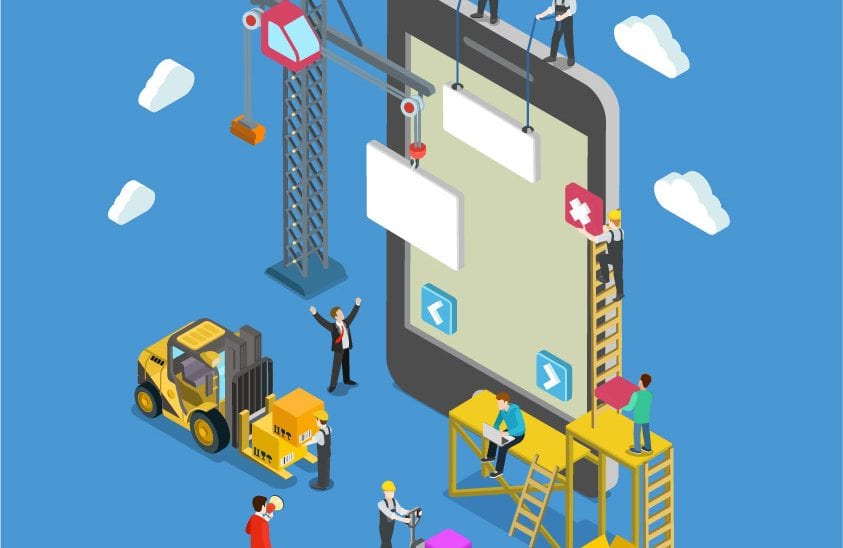The future of the construction industry: Technology should be at the heart

Drew Morris, Sales Director, Comms365, highlights that there is no way that the construction sites of the future will ever become a reality unless the industry can conquer the basics of connectivity. Technology that is crucial for the industry to innovate and keep up with demand, cannot function without high speed, portable and reliable internet connections.
After a turbulent year, 2021 is the year of recovery and growth for the construction industry. However, with labour shortages, supply chain disruptions and stricter regulations, challenging the industry to innovate must be a priority in order for the sector to recover and become resilient. This was reflected in the Construction Leadership Council (CLC) Strategy 2021, with increasing productivity and performance being key challenges to overcome. To do this, it is key for technology to be at the heart of this transformation by accelerating the adoption of new and innovative technologies and processes to create high performing systems that work together, adding value to society.
The adoption of new technology and smarter processes can deliver tangible benefits for construction firms, but there remains a fundamental stumbling block for those organisations looking to capitalise on new innovation – which is finding the best connectivity to do the job. This could be a frequent lack of high speed, portable and reliable Internet connectivity, particularly for sites located in green and brownfield locations, or having access to emergency comms should there be a delay in a fixed-line installation or accidental breakage to a line. It is therefore imperative that the industry addresses these key issues as a matter of urgency so that firms can gain access to the connectivity they need at new sites from day one.
Foundations for change
With rapid advances in technology and the advent of cloud-based services and applications, the way we work and collaborate has drastically changed. Technology innovation has led industries to continually strive to be more efficient, productive and cost effective. Yet, when it comes to the world of construction, investment in IT has remained low in comparison to other industries. The market has been hampered by technical challenges relating to projects that can be large, complex and geographically dispersed. Combined with varying proficiency and maturity levels of smaller subcontractors, advancing at scale has been difficult and has subsequently led to the slow progress of the digitisation of the construction industry.
Despite these challenges, the available technology in construction has advanced rapidly and we are now starting to see examples of how advances in digital technology can deliver efficiency and productivity opportunities at the start of all projects – truly revolutionising the construction sites of the past. Drones, robotics, 3D printing and augmented reality are no longer works of fiction but can be adopted by forward thinking firms looking to capitalise on the benefits that embracing innovation can bring to the construction site.
The catalyst of connectivity
Connectivity is a necessity for businesses in virtually every industry and construction is no exception. Crucially, this is still one fundamental hurdle that the industry must overcome if it is to create a solid foundation for all new digital innovation.
Technology that is crucial for the industry to innovate and keep up with demand, cannot function without high speed, portable and reliable internet connections, but gaining access to connectivity can be a challenge for new sites, particularly those that are located in a Green or Brownfield location where there is typically no existing infrastructure. But as internet communications are no longer restricted to fixed-line only delivery, companies can now invest in a blended communications model of wired and wireless internet access that truly satisfies business needs – irrespective of location.
Advanced bonded service solutions enable organisations to gain additional resilience and contingency from combining different internet access connections together into a single ‘virtual pipe’, with precise performance management. With combined bandwidth and enhanced reliable internet performance integrated into a portable solution, this service is highly suitable for rapid deployment emergency situations where internet services are required urgently and communications infrastructure is either missing or may take several weeks to be installed, meaning sites can be up and running in a matter of hours, not weeks. In addition, this approach builds in future-proofing by providing consistent bandwidth for improved performance and backup resilience to a primary connection for business continuity.
READ MORE:
- Founder Feature: Danny Franklin, Founder of DACCAA
- Waymo are improving autonomous vehicles with DeepMind
- Why customer conversations are vital for brand survival in a post-COVID-19 world
- What can corporates learn from digital transformation in the COVID era?
Conclusion
The construction industry cannot continue to utilise outdated processes and management methods but instead must embrace digital advances and adopt smarter processes and technology to stay competitive. New technology will continue to disrupt the industry and change how we work, but there is no way that the construction sites of the future will ever become a reality unless the industry can conquer the basics of connectivity.
So, how can construction firms ensure that a strong and stable connection is established quickly at a new site to ensure lack of connectivity does not negatively impact on projects? By working with experienced and trusted providers who can supply the connectivity solutions that sites require. The industry will then be able to continually benefit from the opportunities that the latest advances in innovation present and meet the priorities laid out in the CLC strategy, bettering the future of construction. The potential rewards to firms that capitalise on digitisation will be instantaneous.
For more news from Top Business Tech, don’t forget to subscribe to our daily bulletin!
